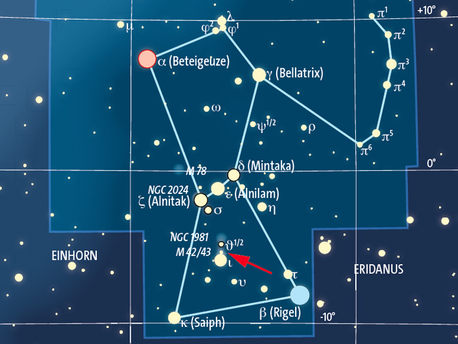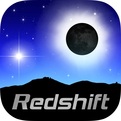Beobachtungstipp Februar
Doppelsterne im Orion
 © Kosmos Verlag
|
Skelettkarte des Sternbiles Orion. Eingetragen ist die Position von M42 – oberhalb bzw. unterhalb von ihm liegen die Doppelsterne Sigma und Iota.
Die Hauptkomponente von Sigma Orionis ist 3,8 mag hell und hat in 42" einen 6,6 mag hellen Begleiter. Beide sind heiße, bläuliche Sterne (Spektraltyp O). Wegen seiner großen Separation ist dieses Paar trotz des starken Helligkeitsunterschiedes sehr leicht zu trennen. Sigma Orionis ist rund 1200 Lichtjahre entfernt.
Mehr über das aktuelle Himmelsgeschehen lesen Sie im Kosmos Himmelsjahr.


